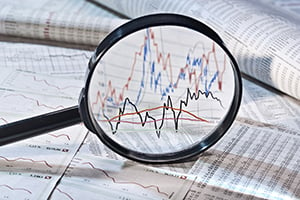 To follow up on my most recent Economic Risk Factor Update and Monthly Market Risk Update, as well as on my colleague Anu’s post on whether the Fed might resort to negative rates, I want to think about where the economy is headed. As I pointed out in the risk updates, the headline news is positive. All the economic indicators that I follow are outside the risk zones, market risk indicators have improved over the past month, and, in general, things are good. At least markets certainly think so. But as I look beyond the headline data, there is a strong case to be made that the current good conditions are much more fragile than they seem.
To follow up on my most recent Economic Risk Factor Update and Monthly Market Risk Update, as well as on my colleague Anu’s post on whether the Fed might resort to negative rates, I want to think about where the economy is headed. As I pointed out in the risk updates, the headline news is positive. All the economic indicators that I follow are outside the risk zones, market risk indicators have improved over the past month, and, in general, things are good. At least markets certainly think so. But as I look beyond the headline data, there is a strong case to be made that the current good conditions are much more fragile than they seem.
Politics matter
Let’s start with politics. If you look at the recent risk factors—the trade wars, Brexit, and, most telling, the government shutdown—you can easily see that most of the economic risks tie directly back to politics. The recent shutdown took both consumer and business confidence down sharply. Although they have since rebounded, we can take away two lessons. First, another shutdown or serious confrontation could drive both down again, this time into the danger zone. Second, despite the rebound, the damage may well persist—as we may have seen in the poor job growth figures in the last employment report. Politics matter and seem to be increasingly affecting the economy directly.
To lay it out clearly, the good headline news—that everything is fine—depends strongly on the economy continuing to perform. That continued performance depends on persistent confidence, both consumer and business. And that confidence is at risk due to politics, as we have seen. Given the damage done, we are even closer to significant risk levels. Another such confrontation could well take us down into recession territory.
Don’t forget the debt ceiling
That damage is an immediate concern, as another confrontation is pending: the debt ceiling. After being suspended with the last budget deal, the debt ceiling came back into effect at the start of this month. Now, the government cannot borrow more money. When the “usual emergency measures” are exhausted, which include raiding various federal slush funds and pools of cash, the government will run out of money. Unlike the last shutdown, which was not centered around economics and where the economic damage was incidental, this next confrontation will hit the economy directly in suspended federal spending (which will be damaging enough) and the fear that, at some point, the government won’t be able to pay its bills (including the interest on its debt).
We don’t know exactly when that point will be (likely middle to end of summer), but then Congress and the White House will have to agree to raise the debt limit. This has been an enormously contentious process in the past and is likely to be even more so now.
The last shutdown did a lot of damage. This next confrontation is likely to do even more in the theater of the negotiation, even if we ultimately get a deal. If we don’t, the damage will be worse, and the economy will be less well positioned to absorb it.
The base case remains solid but . . .
Overall, everything is indeed fine and likely to stay that way. But we now have a very plausible, and even likely, path that takes us into significant economic trouble sometime in the next six months. This path is something new in this recovery so far, which merits attention even while the base case remains solid. Personally, I will be watching politics and confidence as much as anything because that is where the real risks will be.


 Print
Print

